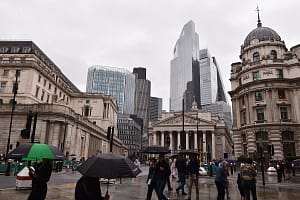According to Begbies Traynor’s Red Flag Alert research for Q2 2018, which monitors the financial health of UK companies,472,183 businesses were experiencing ‘Significant’ financial distress at the end of June 2018, up 9% compared to the same stage last year (Q2 2017: 434,492) but down 1% compared to the previous three months of the year (Q1 2018: 477,183).
Following a spate of positive economic updates over recent weeks, the Red Flag Alert data also reveals that levels of financial distress are increasing at a slower rate year on year than during the previous four quarters (Q1 2018: +33%, Q4 2017: +36%, Q3 2017: +27%, Q2 2017: +25%), which could be a tentative sign of returning stability across the economy.
The sectors with the highest number of businesses in distress year on year were Support Services (112,434, up 10%), Construction (60,208, up 4%), Real Estate (42,254, up 19%), Telecoms (31,770, up 9%) and General Retailers (30,574, up 4%). However, on a quarterly basis, levels of ‘Significant’ distress across these key sectors appear to have stabilised, fluctuating between -2% and +1% compared to the first quarter of 2018.
Regionally, businesses in the South of England continued to see the biggest deterioration in their financial health, with London being the UK’s worst performing region, where ‘Significant’ distress impacted 118,367 companies in the Capital alone (up 17% year on year, but down 1% compared to Q1 2018).
According to the research, 251,495 UK businesses ended the period in a position of negative net worth1, while 109,717 demonstrated a considerable increase in their working capital deficit; both key indicators of financial distress.
Julie Palmer, Partner at Begbies Traynor, said: “After a significant jump in financial distress during the first quarter of 2018, a period marred by weak consumer confidence, growing political uncertainty and the fallout from the ‘Beast from the East’, we may now be seeing tentative signs of stability returning to the UK economy in recent months.
“Although the volume of businesses in ‘Significant’ financial distress remains at relative highs after four consecutive quarters of accelerating distress, the rate of deterioration in UK corporate health has slowed during Q2 2018, supported by recovering business and consumer confidence, higher levels of employment, and continued interest rate stability.
“Looking forward, while there’s a chance this positive trend could continue, the outlook for certain industries is looking increasingly uncertain. The problems facing high street retail have been well documented of late, with the recent epidemic of CVAs and store closures being just the tip of the iceberg. However, the UK Automotive sector looks to be most at risk in our view, facing job cuts and a slowdown in production output and investment, as industry pundits question how it will be able to compete with European competitors post Brexit.”





Leave a Comment